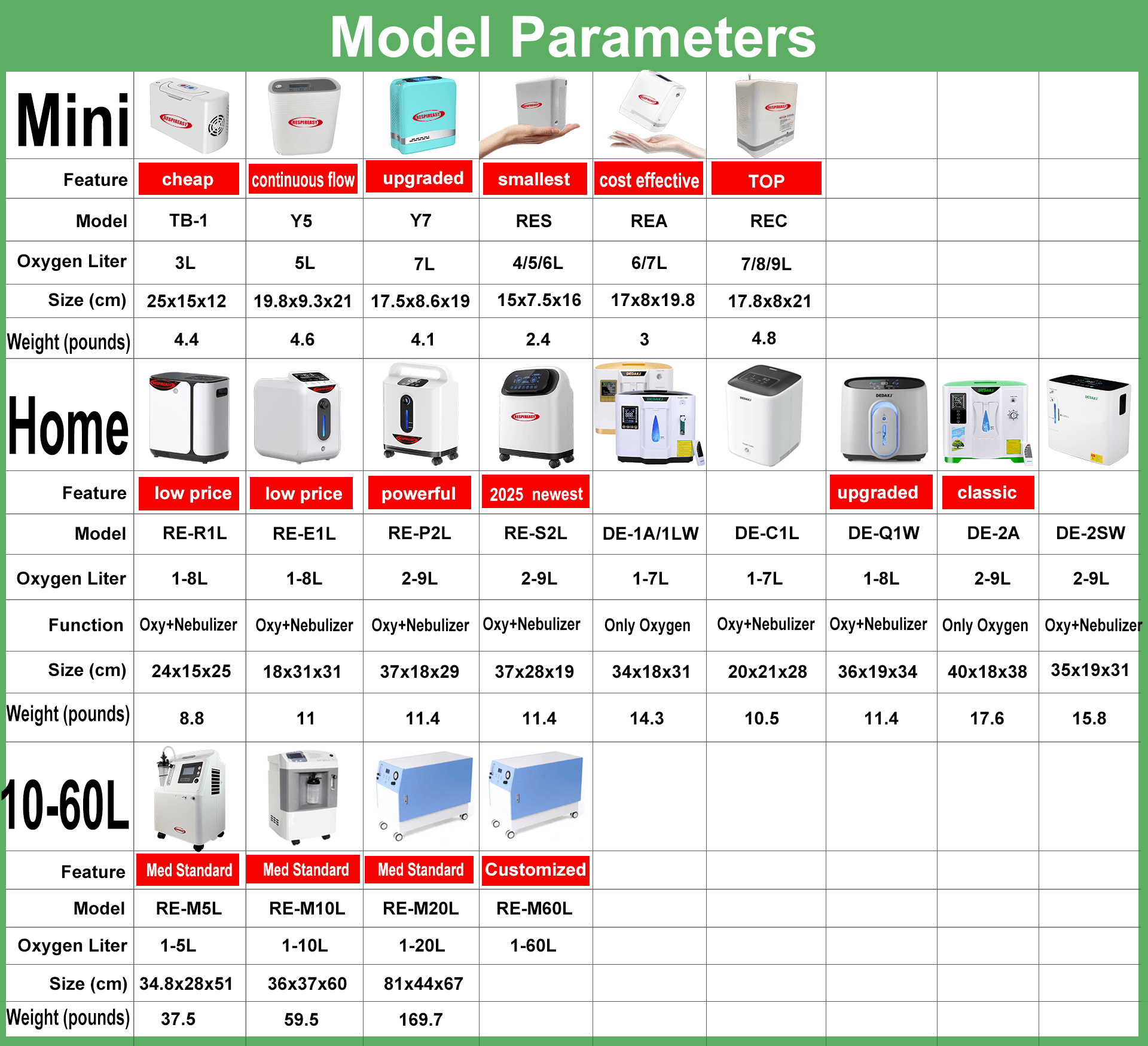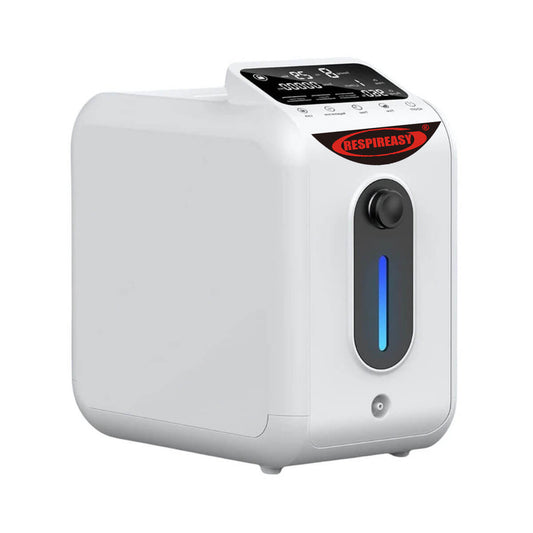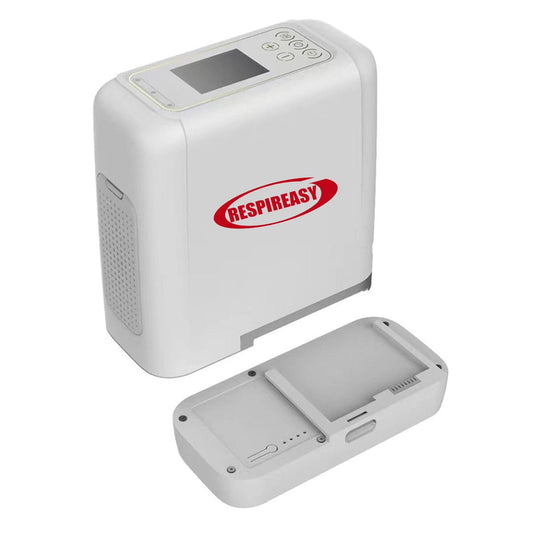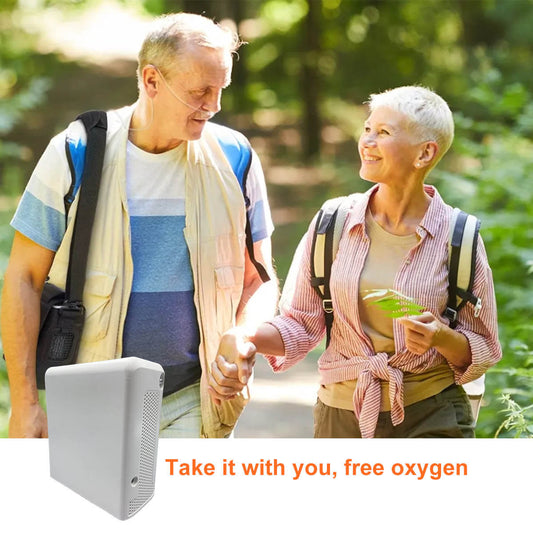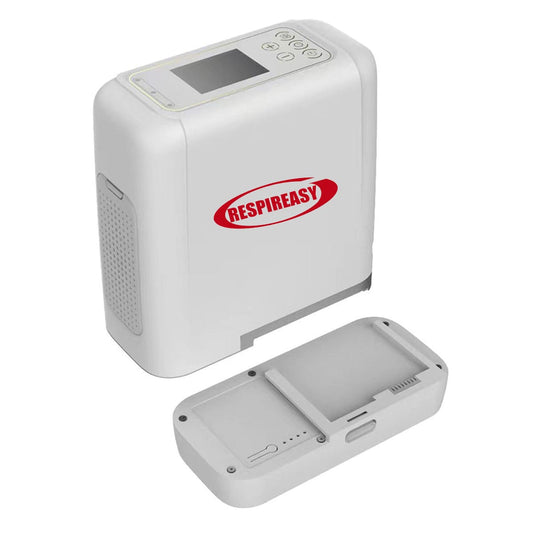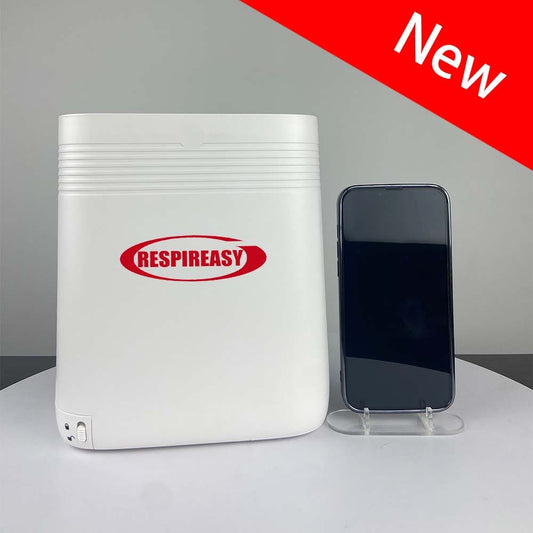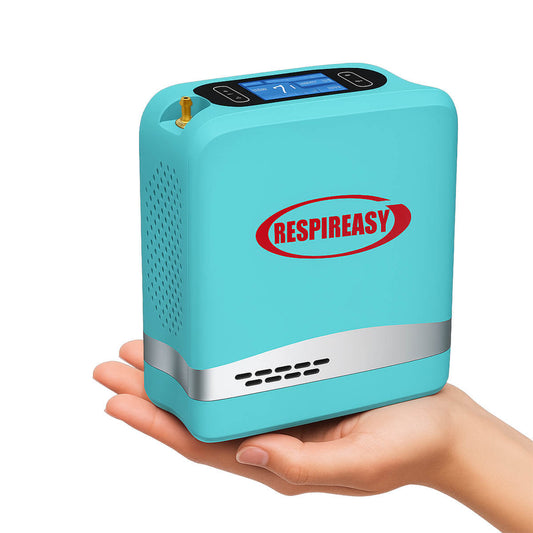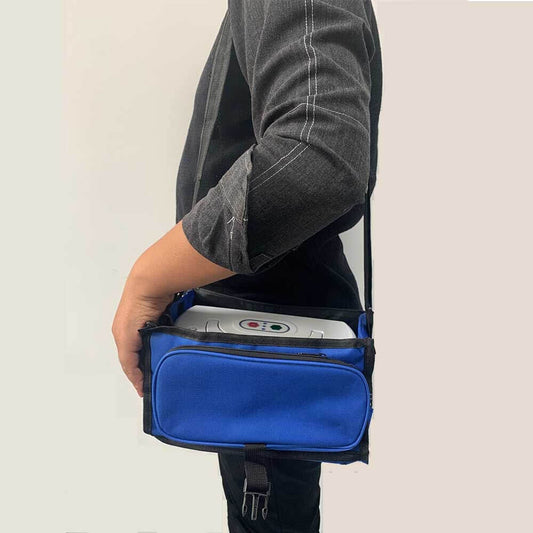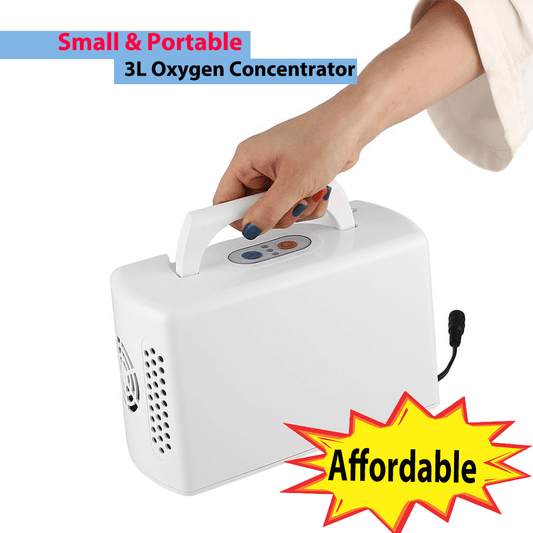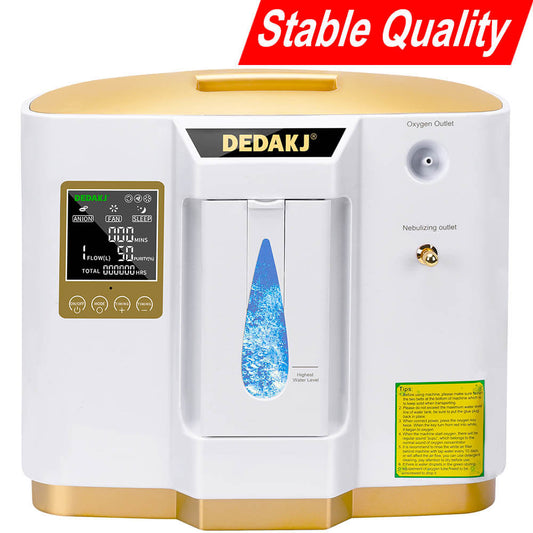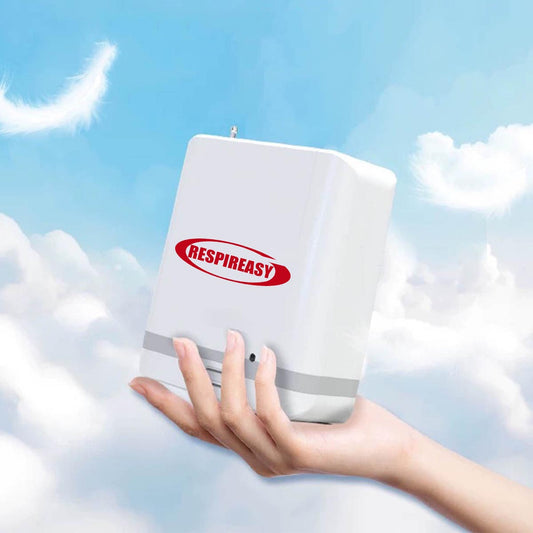¿Ha elegido el concentrador de oxígeno doméstico adecuado?

La oxigenoterapia domiciliaria es fundamental para el tratamiento de pacientes con enfermedades respiratorias crónicas, ya que ofrece importantes beneficios clínicos, como la reducción de hospitalizaciones, la prevención de exacerbaciones, una mejor calidad de vida y una menor mortalidad. Gracias a los avances tecnológicos y su amplia aplicación, la oxigenoterapia se ha trasladado gradualmente de los hospitales al hogar, integrándose en el manejo diario de muchos pacientes con enfermedades respiratorias crónicas. Por lo tanto, los concentradores de oxígeno domiciliarios son especialmente importantes para quienes requieren oxigenoterapia a largo plazo. Sin embargo, el mercado ofrece una gran variedad de concentradores con diferentes funciones. Entonces, ¿en qué se debe fijar la atención al comprar un concentrador de oxígeno?
I. Introducción a los concentradores de oxígeno domiciliarios
Un concentrador de oxígeno domiciliario es un dispositivo que genera oxígeno de calidad médica en el hogar. Generalmente proporciona oxigenoterapia suplementaria a pacientes con enfermedades respiratorias crónicas (como EPOC y fibrosis pulmonar) o que sufren hipoxia por altitud. Los concentradores de oxígeno domiciliarios ayudan a los pacientes a obtener la oxigenoterapia que necesitan en casa.
II. Principios de producción de oxígeno de los concentradores de oxígeno domésticos
- Los principios de producción de oxígeno incluyen la adsorción por oscilación de presión (PSA) y la separación por membrana.
La adsorción por oscilación de presión (PSA), también conocida como generación de oxígeno mediante tamices moleculares, aprovecha las diferentes capacidades de adsorción y liberación de los tamices moleculares para la separación de gases. El concentrador de oxígeno comprime el aire interior, lo purifica mediante un purificador y un secador de aire, y luego lo envía a través de una válvula de conmutación a una torre de adsorción. Dentro de la torre, el nitrógeno es adsorbido por los tamices moleculares, mientras que el oxígeno se acumula en la parte superior y luego entra en un tanque de almacenamiento. Tras una filtración adicional para eliminar olores, polvo y esterilizar, se obtiene oxígeno limpio, generalmente con una concentración superior al 90 %. Presenta ventajas como un bajo consumo energético y un bajo coste, y actualmente es la tecnología predominante en los concentradores de oxígeno domésticos.
Separación por membrana: Este método utiliza una membrana semipermeable para separar el oxígeno y el nitrógeno del aire. Ofrece ventajas como su bajo costo y simplicidad, pero sus desventajas incluyen altos requisitos de rendimiento de la membrana y una concentración de oxígeno típicamente baja, de solo alrededor del 30%, lo que lo hace inadecuado para la oxigenoterapia domiciliaria a largo plazo.
III. Cómo elegir un concentrador de oxígeno doméstico adecuado
Las distintas afecciones médicas y estados físicos requieren diferentes flujos y concentraciones de oxígeno. Consulte a un médico o profesional para aclarar sus necesidades específicas. Los dispositivos médicos deben adquirirse en tiendas oficiales para obtener la garantía de calidad y servicio.
Tienda oficial DEDAKJ
🏆🏆🏆¡Compra ahora! (Entrega en 3-6 días)
DEDAKJ es un proveedor de concentradores de oxígeno de primera categoría, que ofrece ambos Concentradores de oxígeno medicinal de 10 a 20 litros, máquinas de oxígeno domiciliarias de flujo continuo de 1-9 LPM , Para viajar, utilice concentradores de oxígeno portátiles. y otros Accesorios de oxígeno originales DEDAKJ .
Garantizar:
- * Garantía del precio más bajo durante 180 días
-
* Garantía de calidad de 1 año
- * Cambio gratuito; Reemplazo gratuito garantizado
Al elegir un concentrador de oxígeno para el hogar, debe considerar los siguientes factores:
Concentración de oxígeno: Los concentradores de oxígeno ofrecen diferentes concentraciones de oxígeno. Se recomienda elegir uno que cumpla con el estándar nacional de (93±3)% de concentración de oxígeno, ya que este es un indicador importante para garantizar la eficacia del tratamiento.
Caudal de oxígeno: Elija un caudal de oxígeno adecuado según sus necesidades. Los concentradores de oxígeno para uso doméstico suelen tener un caudal de 1-2 L/min, mientras que se recomienda que los concentradores de oxígeno médicos tengan un caudal de 5 L/min o superior.
Nivel de ruido: Los concentradores de oxígeno producen cierto ruido durante su funcionamiento. Se recomienda elegir uno con un nivel de ruido bajo. Las normas del sector estipulan que el nivel de ruido debe ser ≤60 decibelios, considerándose confortable un nivel inferior a 45 decibelios.
Sistema de filtración: Elegir un concentrador de oxígeno con un sistema de filtración de alta eficiencia puede prolongar la vida útil del dispositivo y garantizar que el oxígeno inhalado por el paciente sea puro y no esté contaminado.
Seguridad: Elija un concentrador de oxígeno con múltiples características de seguridad, como autocomprobación al encenderse y protección contra sobrecorriente en situaciones anormales.
Tamaño del equipo: Tenga en cuenta el tamaño de su hogar y los requisitos de portabilidad.
Precio y costos de mantenimiento: Elija equipos con una excelente relación costo-beneficio que satisfagan sus necesidades. Conozca los requisitos de mantenimiento de los concentradores de oxígeno y elija equipos fáciles de limpiar y mantener.
Marcas y fabricantes: Elegir marcas de concentradores de oxígeno reconocidas y de buena reputación garantiza la calidad del producto y el servicio posventa. Conocer la escala de producción, la capacidad técnica y la cuota de mercado del fabricante ayuda a evaluar la fiabilidad y la estabilidad del producto.
IV. Principales tipos de concentradores de oxígeno domiciliarios
Clasificación de los concentradores de oxígeno domiciliarios:
- Concentradores de oxígeno portátiles : De tamaño pequeño, adecuados para su uso durante viajes o actividades al aire libre.
- Concentradores de oxígeno estacionarios para uso doméstico : De tamaño mediano, adecuados para su uso en entornos domésticos.
- Concentradores de oxígeno médico de gran potencia : De gran tamaño, con una producción de oxígeno de 10, 20 litros o superior, adecuados para su uso en instituciones médicas o para pacientes que requieren altas concentraciones de oxígeno.
V. Precauciones para el uso de concentradores de oxígeno domiciliarios
(1) Mantenimiento del tubo de oxígeno: El tubo de oxígeno debe limpiarse cada 3 días. El inhalador nasal o la mascarilla del tubo de oxígeno deben limpiarse después de cada uso y pueden desinfectarse con alcohol medicinal. Se recomienda reemplazar el tubo de oxígeno cada 2 meses. (1) La cánula de oxígeno debe mantenerse seca y libre de gotas de agua.
(2) Flujo de oxígeno: Seleccione un flujo de oxígeno adecuado y coloque la cánula de oxígeno correctamente. No ajuste el flujo de oxígeno arbitrariamente para evitar daños al organismo.
(3) Humidificación y desinfección de la oxigenoterapia: La oxigenoterapia domiciliaria se realiza principalmente con oxígeno de bajo flujo. Las vías respiratorias del paciente poseen funciones de calentamiento y humidificación propias, que generalmente satisfacen las necesidades de humidificación. Para los pacientes que reciben oxigenoterapia de bajo flujo (≤4 L/min), no se recomienda la humidificación rutinaria. Sin embargo, para los pacientes con flujos de oxígeno >4 L/min o que presentan sequedad en las vías respiratorias superiores, se puede considerar la humidificación para mejorar la tolerancia. Asimismo, se recomienda la humidificación para los pacientes que han perdido la función de calentamiento y humidificación de las vías respiratorias superiores tras una traqueotomía. Se recomienda limpiar el frasco humidificador cada 5-7 días. Si se utiliza agua destilada o purificada, basta con enjuagarlo con agua limpia. Si se utiliza agua mineral, se recomienda sumergirlo en vinagre blanco antes de enjuagarlo. El agua del frasco humidificador debe cambiarse diariamente. Es importante mantener las manos limpias al manipular el humidificador. Los tubos de oxígeno y el humidificador deben reemplazarse, limpiarse y desinfectarse periódicamente según las instrucciones de uso del producto. Limpie inmediatamente cualquier suciedad. Mantenga una buena circulación de aire en el interior.
(4) Rango objetivo: El rango de SpO2 mantenido después de la terapia de oxígeno varía ligeramente según la enfermedad, con un rango objetivo de 88% a 94%.
(5) Reacciones adversas: Las reacciones adversas comunes a la oxigenoterapia domiciliaria incluyen daños en la piel y las mucosas causados por las mascarillas de cánula nasal, toxicidad por oxígeno, retención de CO2 y atelectasia causada por la oxigenoterapia. Reforzar la educación en salud y seguridad puede reducir las reacciones adversas.
VI. Mantenimiento diario del concentrador de oxígeno
Antes de usar el concentrador de oxígeno, lea atentamente el manual de instrucciones para prepararse ante posibles fallos de funcionamiento. Para mantener el funcionamiento normal y prolongar la vida útil de su concentrador de oxígeno doméstico, se requiere el siguiente mantenimiento rutinario:
(1) Limpieza: Limpie el equipo regularmente para evitar la acumulación de polvo y bacterias. Limpie la carcasa exterior con un paño suave y evite el uso de limpiadores químicos.
(2) Entorno: Coloque el equipo en un área fresca y bien ventilada, lejos de la luz solar directa. Nunca cubra el concentrador de oxígeno con nada.
(3) Seguridad: Asegúrese de que el equipo esté correctamente conectado a tierra y colocado sobre una superficie estable, lejos de fuentes de calor y llamas, ya sean abiertas o cerradas. Revise periódicamente el cable de alimentación y el enchufe para comprobar que no estén dañados ni desgastados.
(4) Reemplazo del filtro: La mayoría de los concentradores de oxígeno tienen un filtro primario y un filtro secundario.
- El filtro principal es de algodón filtrante, que suele venir en pares y se puede reemplazar. Cámbielo cada 1 o 2 meses. El algodón filtrante es un consumible y debe reemplazarse puntualmente.
- El filtro secundario generalmente no es reutilizable y se recomienda reemplazarlo cada 3 meses. El intervalo específico puede ajustarse según el uso. Si observa algún funcionamiento anormal del concentrador de oxígeno o una disminución en la pureza del oxígeno, también debe reemplazar el filtro secundario de inmediato.
Referencias:
[1] Asociación Médica China, Revista de la Asociación Médica China, Rama de Medicina General de la Asociación Médica China, et al. Directrices para la oxigenoterapia domiciliaria en adultos con enfermedades respiratorias en China (2024) [J]. Revista China de Médicos Generales, 2025, 24(1): 11-27. DOI: 10.3760/cma.j.cn114798-20241016-00818.
[2] O'Driscoll BR, Howard LS, Earis J, et al. Guía BTS para el uso de oxígeno en adultos en entornos sanitarios y de urgencias [J]. Thorax, 2017, 72(Supl. 1): ii1ii90. DOI: 10.1136/thoraxjnl2016209729.
[3] Guía de práctica clínica de la AARC. Oxigenoterapia en el hogar o en un centro de atención médica alternativo: revisión y actualización de 2007[J]. Respir Care, 2007, 52(8):1063-1068.
[4] Liang Zongan, Xia Jingen. Tutorial de terapia respiratoria[M]. 2.ª ed. Pekín: Editorial Médica del Pueblo, 2023.
[5] Li Yulian, Li Hong. Avances en la investigación sobre la oxigenoterapia domiciliaria a largo plazo para pacientes con enfermedad pulmonar obstructiva crónica [J]. Revista China de Enfermería, 2019, 54(11):1746-1751. DOI:10.3761/j.issn.02541769.2019.11.030.































